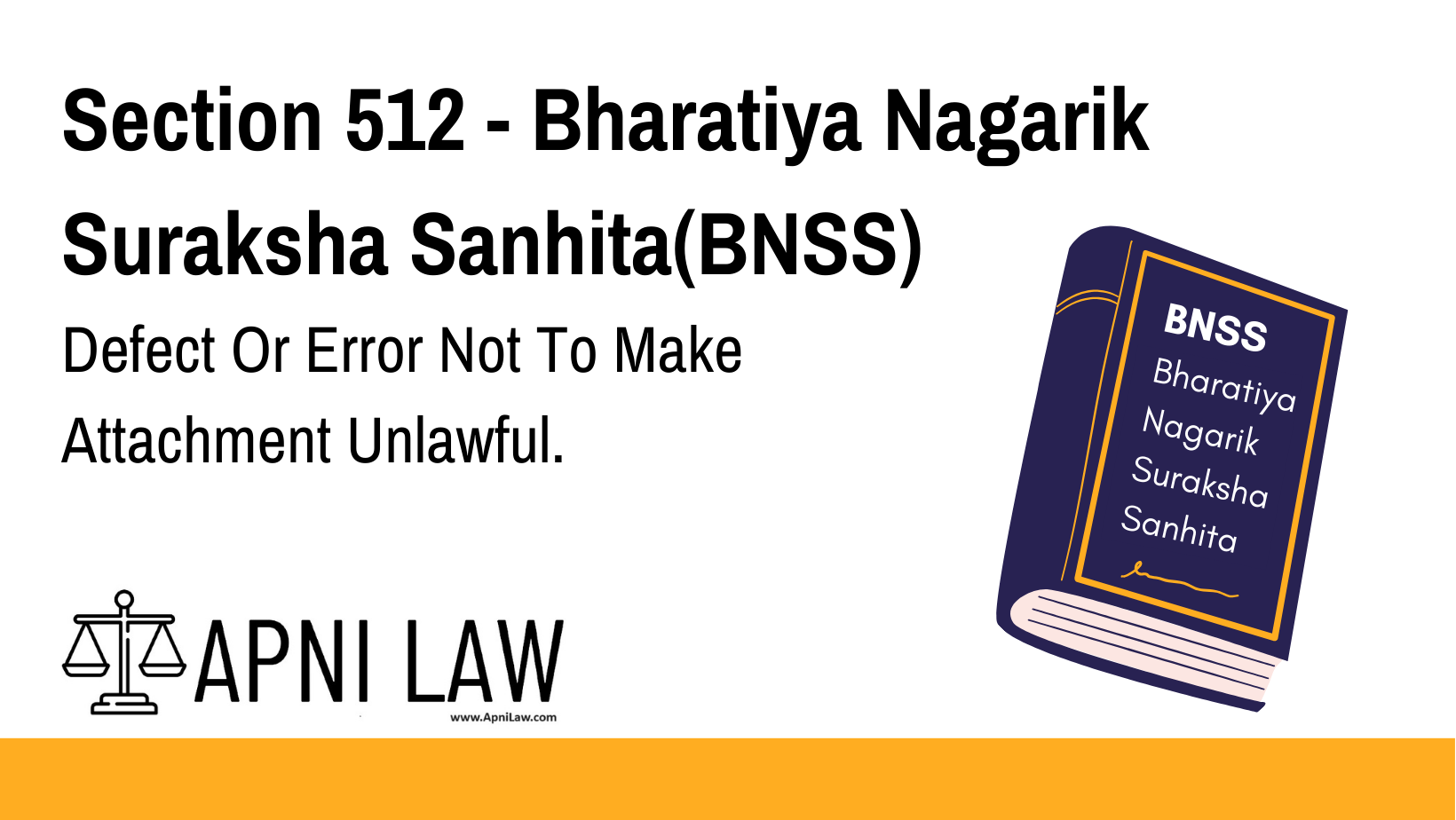Code: Section 512 BNSS
No attachment made under this Sanhita shall be deemed unlawful, nor shall any
person making the same be deemed a trespasser, on account of any defect or want of form
in the summons, conviction, writ of attachment or other proceedings relating thereto.
Explanation of Section 512 BNSS
Section 512 of the BNSS clarifies an important principle in legal proceedings regarding attachments. An attachment refers to the legal process of seizing property to ensure it is available to satisfy a potential judgment.
This section states that:
- Defects or Errors in Legal Documents: Even if there are errors or defects in legal documents such as summons, convictions, or writs of attachment, the attachment itself remains valid.
- No Trespass Liability: The person who executes the attachment cannot be held liable as a trespasser solely because of these defects or procedural issues.
- Legal Protection for Officials: This provision offers legal protection to officials performing their duties, ensuring that minor procedural errors do not lead to unnecessary legal complications.
The purpose of this section is to prevent technicalities from invalidating an attachment, thereby promoting the efficiency and effectiveness of legal proceedings.
Illustration
Example 1: Attachment Despite Summons Error
A Court issues a summons to a person regarding a debt recovery case, but there is a minor error in the date mentioned in the summons. Despite this, the attachment of the debtor’s property is carried out. According to Section 512, this attachment remains lawful, and the official executing it is not considered a trespasser.
Example 2: Invalid Writ of Attachment
A writ of attachment is issued, but it lacks the official signature of the presiding officer due to a clerical mistake. Even though the writ is defective, the attachment remains valid, and the person who executed it is not liable for trespassing.
Common Questions and Answers on Section 512 BNSS
1. Can an attachment be declared unlawful due to defects in legal documents?
- Answer: No, under Section 512, an attachment remains lawful even if there are defects or errors in the summons, writ, or other related proceedings.
2. What happens if someone executes an attachment based on a defective writ?
- Answer: The person executing the attachment will not be considered a trespasser solely because of the defect, as long as they were acting in good faith.
3. Does this section apply to all types of legal attachments?
- Answer: Yes, it applies to all attachments made under the BNSS, including those related to debt recovery, property seizure, and other legal proceedings.
4. Why is Section 512 important in legal proceedings?
- Answer: It protects officials from legal liability due to minor procedural errors, ensuring that the legal process is not unduly delayed or disrupted.
Conclusion
Section 512 of the BNSS reinforces the principle that justice should not be hindered by technicalities. By ensuring that attachments remain valid despite minor errors, this section promotes legal efficiency and provides protection to law enforcement and judicial officials involved in such processes.








